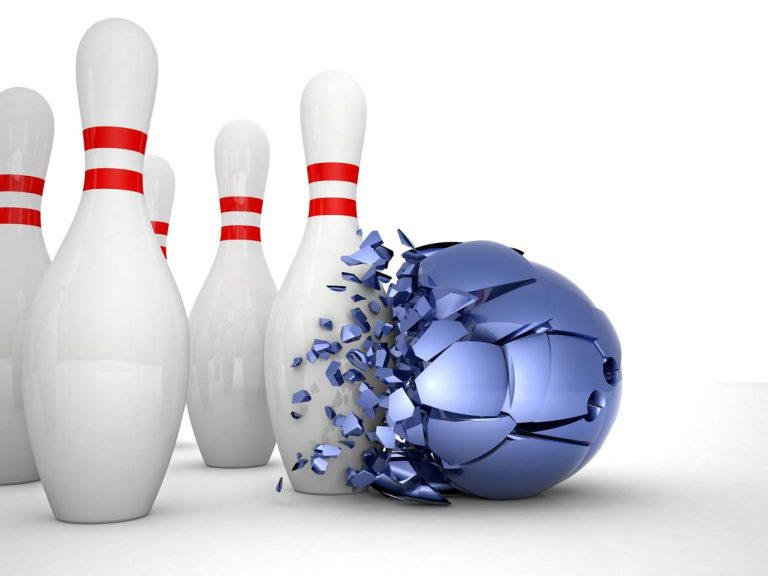What is a Perfect Game in Duckpin Bowling?
If you’re a fan of bowling, you may have heard of the term “perfect game.” But what exactly is a perfect game in duckpin bowling? A perfect game in duckpin bowling is when a player bowls 12 strikes in a row, resulting in a score of 300. Unlike traditional ten-pin bowling, where a perfect game is achieved by bowling 12 strikes in a row with two rolls per frame, duckpin bowling allows three rolls per frame.
Duckpin bowling is a variation of standard ten-pin bowling that is played with smaller balls and 10 stocky pins. The game presents a new set of challenges for bowlers, including the need for precision and accuracy. Achieving a perfect game in duckpin bowling is a difficult feat, and requires a combination of skill, practice, and a bit of luck. In fact, it is estimated that less than one percent of all duckpin bowlers have ever achieved a perfect game.
Understanding Duckpin Bowling
History and Evolution
Duckpin bowling is a unique variation of the sport that originated in Boston around 1900. The game quickly spread to other parts of the country, particularly Connecticut, where it became very popular. It is believed that the game was invented by a group of bowling alley owners who were trying to create a new, more challenging version of the game.
Equipment and Lane Specifications
The game was quickly embraced by the public and soon became a popular pastime. In 1927, the National Duckpin Bowling Congress was formed to regulate the sport and establish standard rules and regulations.
Duckpin bowling uses smaller balls and pins than regular ten-pin bowling. The balls used in duckpin bowling are 4.75 inches in diameter and have no finger holes. The pins are shorter and smaller in diameter than those used in ten-pin bowling. The lanes are also narrower and shorter than those used in ten-pin bowling.
The lanes are made of wood and are coated with a layer of rubber to provide traction for the ball. The foul line is located 13 feet from the pins, and there are no gutters.
Rules and Scoring
Duckpin bowling is played in ten frames, with each frame consisting of three rolls. The scoring system is similar to that used in regular ten-pin bowling, with strikes, spares, and open frames. However, the maximum score in duckpin bowling is 300, achieved by rolling 12 consecutive strikes.
Differences from Ten-Pin Bowling
Duckpin bowling differs from ten-pin bowling in several ways. The balls used in duckpin bowling are smaller and have no finger holes, making them more difficult to control. The pins are also smaller and lighter, making them easier to knock down. The approach and release in duckpin bowling require less power and precision than in ten-pin bowling. The spin, hook, and curve shots are less effective in duckpin bowling due to the smaller ball size.
Technique and Strategy
To be successful in duckpin bowling, you need to develop a consistent approach and release. You also need to be able to adjust your shots based on lane conditions and pin placement. Developing a good spare shooting technique is also important, as spares can be difficult to convert in duckpin bowling.
Playing a Game
To play a game of duckpin bowling, you need to follow the basic rules and regulations. You must stay behind the foul line when rolling the ball, and you must wait for the pins to be reset before making your next shot. The game consists of ten frames, with each frame consisting of three rolls.
The Challenge of Perfection
Scoring a Perfect Game
A perfect game in duckpin bowling is achieved by rolling 12 consecutive strikes, resulting in a total score of 300. This is a challenging feat that requires a great deal of skill and practice. Many bowlers consider a perfect game in duckpin bowling to be the ultimate achievement in the sport.
Difficulty and Rarity
Achieving a perfect game in duckpin bowling is an incredibly challenging feat that requires a combination of skill, finesse, and consistency. Unlike ten-pin bowling, where perfect games are relatively common. The smaller size and weight of the balls and pins, coupled with the shorter lanes, make it much harder to achieve a perfect game in duckpin bowling.
Famous Perfect Games and Players
Despite the rarity of perfect games in duckpin bowling, there have been a few notable instances of players achieving this remarkable feat. One of the most famous perfect games was bowled by Amy Bisson Sykes at the National Duckpin Youth Association Tournament in 1992 NBC Connecticut. Sykes was just 12 years old at the time and remains the youngest player to ever bowl a perfect game in duckpin bowling.
Other notable players who have achieved perfect games in duckpin bowling include hall of famers such as Jimmy Disbrow, Richie Hornburg, and Dan Gassman NBC Connecticut. These players are celebrated for their incredible talent and consistency, which allowed them to achieve perfection in a game that is notoriously difficult.
Strategies for Achieving a Perfect Game
If you’re looking to achieve a perfect game in duckpin bowling, there are a few key strategies that can help you increase your chances of success. First and foremost, it’s important to practice consistently and develop a deep understanding of the game’s nuances and intricacies Bowling for Beginners. This will allow you to develop the precision and finesse necessary to consistently hit your targets and knock down all the pins.
In addition to practicing regularly, it’s also important to develop a solid strategy for each game and adhere to it consistently Your Bowling Home. This may involve adjusting your approach based on the specific lane conditions, or focusing on hitting specific targets to maximize your chances of success.
Ultimately, achieving a perfect game in duckpin bowling requires a combination of talent, skill, and consistency. While it may be a challenging and elusive goal, the thrill of achieving perfection is what makes the game so exciting and rewarding for players of all levels and abilities.
Cultural and Historical Significance
Duckpin bowling has a rich cultural and historical significance in the United States, particularly on the East Coast. The game has been a popular pastime for over a century, with its origins tracing back to Baltimore, Maryland in the early 1900s. Duckpin bowling quickly gained popularity in the region and eventually spread to other parts of the country.
Duckpin Bowling in Popular Culture
Duckpin bowling has been featured in various forms of popular culture throughout the years. The sport was referenced in a 1913 article in the Boston Daily Globe, which described it as “the latest fad in tenpin bowling.” The Baltimore Orioles baseball team even had a duckpin bowling alley installed in their locker room in the 1950s.
Notable Duckpin Bowling Locations
Baltimore, Maryland is widely considered the birthplace of duckpin bowling and remains a hub for the sport to this day. The National Duckpin Bowling Congress is headquartered in Baltimore, and the city boasts several notable duckpin bowling alleys, including Patterson Bowling Center and Mustang Alley’s.
Connecticut is another state with a strong duckpin bowling presence, with many alleys located throughout the state. Lowell, Massachusetts and Indianapolis, Indiana also have notable duckpin bowling scenes.
The Sport’s Impact and Legacy
Duckpin bowling has had a significant impact on the communities and individuals who participate in the sport. Leagues and competitions are held regularly, providing opportunities for players of all ages and skill levels to participate. The sport has also played a role in the growth and development of youth programs and organizations.
Future of Duckpin Bowling
While duckpin bowling may not be as widely known as its tenpin counterpart, the sport continues to thrive in many parts of the country. As the sport evolves and adapts to modern times, it will undoubtedly continue to have a lasting impact on the communities and individuals who participate in it.




